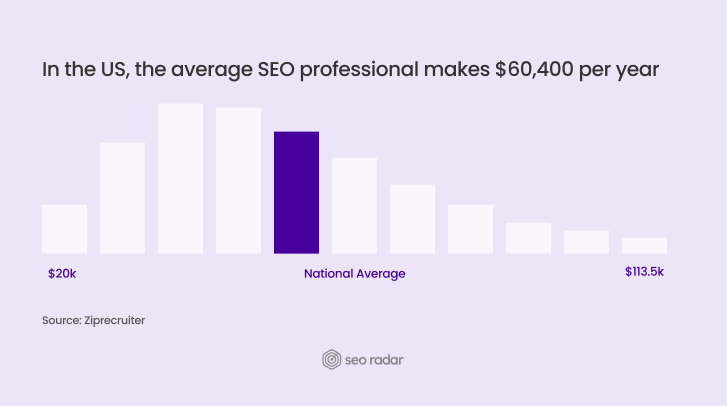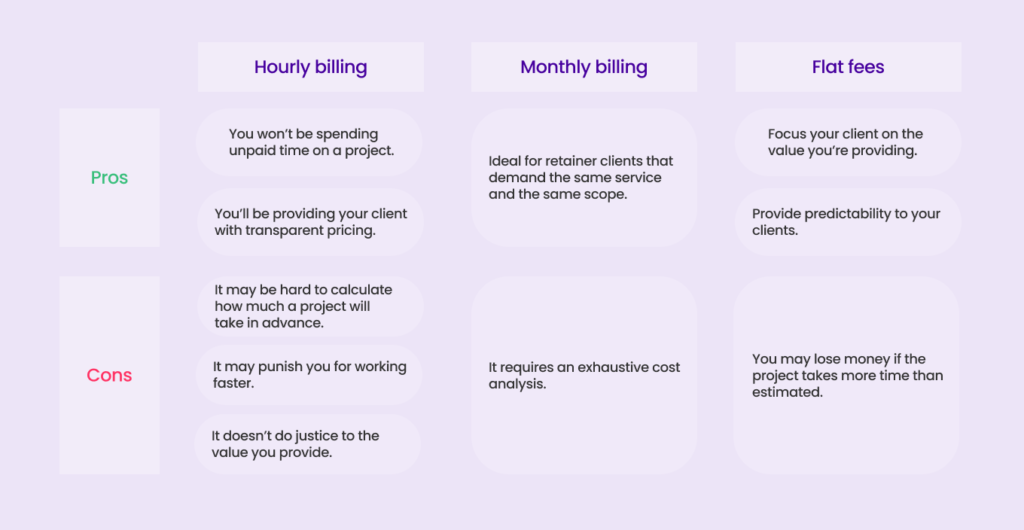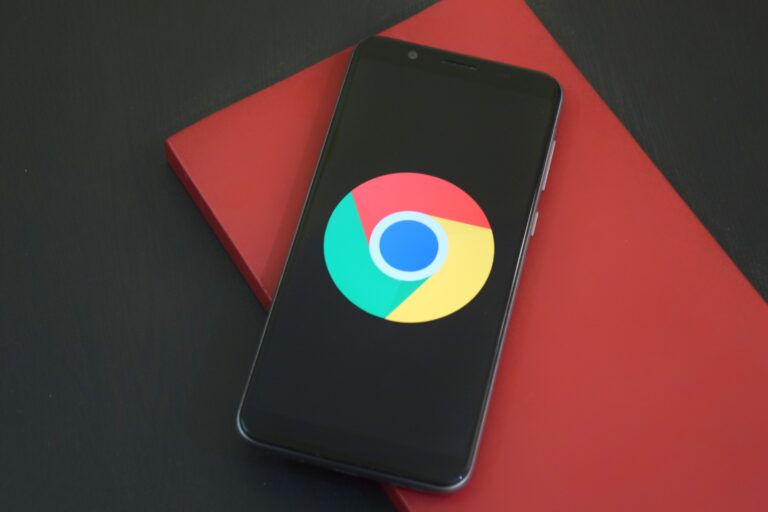The new year can be a great opportunity to set new goals and rethink your freelance business. Whether you’re a new freelancer, or you’ve been working on your own for a while, pricing can be a tricky subject. How much should you charge? What should your prices cover? How can you know if you’re undercharging?
SEO has never been so powerful. According to Terakeet, SEO ROI can be as high as 12.2x the marketing investment. This puts SEO in the same league as highly profitable types of content marketing, such as email marketing. Additionally, SEO can reduce the cost of customer acquisition by 87.41% and increase the value of each blog visit by 429%.
So, with the right service at the right price, you could make this year the best year ever for your SEO business.
In this post, we’ll explore:
- Average SEO pricing
- What to include in your SEO freelancer fees
- Why SEO services need to have a profit margin
- How to add extra value to your services and stand out from competitors
Let’s dive in.
Average SEO Pricing
Especially if you’re new to freelancing, you may be wondering what’s the average rate an SEO expert will charge for a project. The truth is that it depends. SEO pricing can vary widely, according to:
- The project’s scope & scale
- The client’s size
- The tools the project requires
- Where the freelancer and clients are based
- The freelancer’s preferred pricing system
- The freelancer’s profit margin
We’ll take a look at these factors later in the article. But, paying attention to the numbers: How much does an SEO make, on average?
According to ZipRecruiter, in the US, SEO professionals make approximately 60,400 USD per year (or $29.04 per hour).
However, income varies widely, with some US-based SEOs making as little as $20k per year, and others making over $100k. The two key factors behind these differences are seniority and location.
For example, the average income for SEO professionals living in Silicon Valley is a little over $73k per year. Additionally, a Head of SEO is making approximately $129k on average. But, these numbers only give us a clear idea of how much you can expect to make in-house. How much could expect to earn as a freelancer?
Research from 2023 indicates that most SEO freelancers charge:
- $501–$1,000 per month
- $75–$100 per hour
- $2,501–$5,000 per project
With these numbers in mind, you know how many zeroes your clients will expect to see in your estimates. But, how can you determine your specific rates? And, once you’ve determined your rates, how can you increase them?
The 6 Factors Behind SEO Pricing
In this section, we’ll take a look at the 6 factors that define a freelancer’s SEO rates. Let’s dive in.
Project Scope & Client Size
A year-long 365° SEO project should be priced higher than some quick technical SEO fixes. Meanwhile, if your client is a small company with a 5-page website, their SEO needs will be far less complex than the needs of a corporation running a multilingual website. So, when working with small clients, it probably makes sense to charge less.
The scope of the project will also determine which pricing method you should adopt. If, for example, you’ll be working on a 12-month project, monthly pricing may make more sense than charging a general project fee. Additionally, if you’re being commissioned a series of quick fixes, charging for the hours it’ll take may make the most sense.
SEO Tools & Resources
In SEO, how you gather your data is decisive to the quality of your results. So, investing in tools is absolutely vital, and you should transfer those costs to your clients. But that doesn’t mean that you have to charge your monthly subscriptions to every client in full.
For example, if you’re using a tool with 10 different companies, it makes sense to charge only 10%-15% of the subscription fee to every client. That way, you’re getting your investment back, without making your rates less competitive.
Client Location
Another factor that can impact your pricing is where you and your client are based. If you’re working from a country with a high cost of living, you’ll probably be unable to compete on price with freelancers from countries with a lower cost of living. Likewise, a small client from Europe may have a larger SEO budget than a small client from Southeast Asia.
If you’ve never freelanced before, find out the average SEO costs in your area. Additionally, whether you’re working on a local or international scale, get a clear idea of the taxes you’ll have to pay, and how they’ll impact your project rates.
Pricing Model
Last but not least, when you’re looking at SEO pricing online, you’ll find that some freelancers and companies charge by the hour or per month. Meanwhile, others charge a flat fee for an entire project. These pricing models have their pros and cons. Let’s take a quick look.
Charging per hour has some advantages. If you adopt this pricing method:
- You won’t be spending unpaid time on a project.
- You’ll be providing your client with transparent and predictable pricing.
But, charging per hour can also cause some problems. For instance:
- It may be hard to calculate how much a project will take in advance, and, if the project scope doesn’t change, your client may be unwilling to pay an extra.
- If you don’t increase your fees regularly, charging per hour may punish you for developing your skills and working faster.
- It doesn’t do justice to the value you provide. Something that takes an hour may have more impact for your client, than something that takes 5 hours of busywork. So, why should you be charging less for something worth more, just because it took you less time?
On the other hand, charging a monthly fee can be great for long projects or retainer clients. If you’re providing the same service, with the same scope, every month, it makes sense to simplify your pricing. When setting your monthly fee, make sure you set a simple and stable number, that includes:
- Your tools
- Your billable hours
- Any extra expenses
- Taxes
- Profits
Charging a single flat fee for the entire duration of the project also comes with pros and cons. This option can be ideal if you’re working within a very clearly defined scope, and have certain specific goals. For example, if you’re writing 10 pages of SEO-optimized copy, you could calculate a flat fee for each page, multiply it, add any extra costs, and make that your general project fee. Flat fees can also help you:
- Shift the conversation away from billable hours, and focus your client on the value you’re providing.
- Provide predictability and transparency to your clients.
But, if things go south and end up taking extra time, your flat fee may start to look insufficient. So, while an hourly fee may be an incentive to focus on details and make sure everything’s perfect, for some freelancers, a flat fee may be an incentive to rush.
There’s no perfect pricing model. It all depends on what type of SEO services you’re providing, and what conditions you need to do your best work.
Skill & Experience
What type of SEO specialist are you? Are you a link builder? Are you a technical SEO expert? Or are you a copywriter with SEO insight?
For instance, if you’re doing technical SEO, it may make sense to charge per hour. Meanwhile, a copywriter may find it best to charge per deliverable.
Aside from your specific skill set, how long you’ve been working in SEO will also affect your rates. If you’re specialized in a certain type of SEO, and you’ve been doing it for years, you can comfortably charge a higher rate than a junior person. And, if you’re less experienced, it can be wise to charge significantly less than experts’ fees.
Freelancer Rates & Profit
New and seasoned freelancers alike often struggle to identify why they’re always busy, but still struggling financially. Sometimes, it takes months or years of work to figure out something obvious: Your freelance practice is a business, and as such, it should make a profit. So, once you’ve calculated your hourly rates (according to your expertise) and added your tools to the costs, you should calculate a profit.
Making a profit will allow you to reinvest in your business. For instance, you can use your profit to run an ad campaign, hire someone to redesign your website, or take courses and expand your skillset. Additionally, with a healthy profit margin, you’ll be able to keep your business afloat when you’re not getting any new clients.
Ryan Waggoner, a consultant working with freelancers, suggests thinking of costs as “the floor, not the ceiling”. Running a freelance business often finds you doing things beyond the service you’re providing. Accounting, business management, sales, and other tasks are not billable hours but should be covered by your revenue. That way, you could also build a budget to delegate those tedious tasks in the future.
Protect your SEO Wins with SEORadar
In this article, we discussed the 6 pillars of sustainable SEO pricing. If you’re looking forward to raising your rates in 2023, your results are your best argument.
SEO projects are often long, multifaceted, and demanding. It’s not uncommon for a project to begin with technical SEO and end up covering areas related to copywriting or user experience. So, you don’t want any accidental code changes to ruin months of SEO work.
SEORadar is the first tool that lets you monitor code changes in your clients’ websites, automatically. SEORadar keeps an eye on the code and notifies you of any changes before they have an impact.
Interested? Book a demo or start a free trial – no credit card required.






